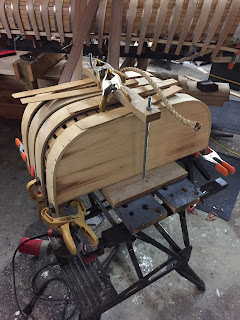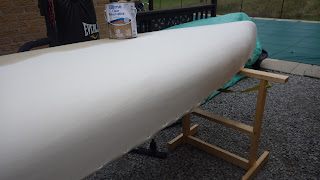4 years in the making, we can build and not see our breath from the cold! Tools are warmer too...
33k BTU direct vent wall heater is enough as the shop is fully insulated; filler can cure, paint won't freeze and we can finish off the first replica.
Can't say enough about this company, job done in 4 hours and not a glitch. Only company to actually come out and quote, and their price was literally half of the others i called. Neighbours likely thought our furnace had quit!
Nice unit barely protrudes into the workspace
Sealed combustion unit, from an American company.
Template time, installation starting
All done, now for the gas plumbing. Old buried gas line to a pool heater from the meter cut costs further
Just need to wire a receptacle for the fan power, and its done. Extension is fine for now, and it throws the heat! Shop went from 40 to mid 60s in an hour and a half.
Life is good!


























































